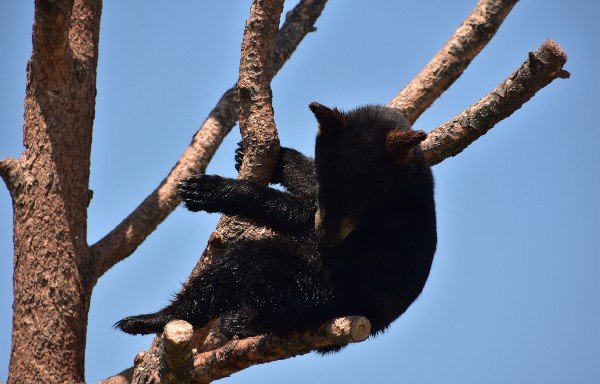Grizzly bears are among the most majestic and awe-inspiring creatures on the planet. Once widespread across the entire western United States, they are now primarily found in states like California, Idaho, Wyoming, and Washington. These powerful animals require vast territories—females need between 50 and 300 square miles, while males roam across an impressive 200 to 500 square miles of habitat. Despite their solitary nature, these enormous home ranges may overlap, especially between mothers and their young.
With their impressive physical presence and fascinating behavior, grizzly bears capture our imaginations. Let’s dive deeper into their world, exploring how they communicate, move, and thrive in the wilderness.
Communication: Sounds and Movements
Grizzly bears have a unique way of communicating through a combination of sounds and body language. Growling, moaning, and grunting are common vocalizations they use to express themselves. Female grizzlies are particularly vocal with their young, maintaining constant communication to ensure their cubs’ safety and learning. During the mating season, males may growl and even engage in fierce battles for the attention of receptive females.
But communication isn’t just verbal. Grizzly bears use their bodies to send signals to other bears. One distinctive behavior is rubbing their bodies against trees, leaving scent markings that announce their presence in a territory.
Daily Routine and Behavior
Grizzly bears are highly intelligent, independent animals that tend to avoid human interaction. With a keen sense of smell and excellent hearing, they can detect potential threats or opportunities for food from great distances. Their remarkable memories, particularly regarding food sources, aid their survival in the wild.
These bears are active at all hours—both day and night—although they prefer to stay hidden from humans. In hot weather, grizzlies seek shelter in thick vegetation, such as tall grasses or willow groves, where they can rest and cool off during the hottest part of the day.
Physical Activity: Speed, Swimming, and Climbing
Though they may look bulky, grizzly bears are impressively agile. They can sprint at speeds of up to 35 miles per hour over short distances, making them surprisingly fast for their size. While they aren’t known for swimming long distances, they are competent swimmers and often take to the water to hunt for fish or simply cool down.
Their sharp, curved claws—along with immense strength—enable them to climb trees, particularly when young, to evade predators or threats. Despite their size, they can ascend a tree with ease if necessary.
Hibernation: A Season of Rest and Renewal
As winter approaches, grizzly bears prepare for hibernation by consuming vast quantities of food to build up crucial fat reserves. When the cold sets in, they retreat to dens they’ve dug into hillsides or forested areas. Inside these dens, their heart rates and metabolic functions slow dramatically, allowing them to live off their stored fat for several months. Interestingly, female grizzlies give birth during hibernation, welcoming their cubs into the world in the safety and warmth of the den.
Grizzly bear hibernation isn’t a deep, uninterrupted sleep. They can wake quickly if disturbed and are highly alert to changes in their environment during the winter months.
Diet: A Varied and Adaptable Appetite
Grizzly bears are omnivores with a diverse diet that changes with the seasons and availability of food. Here’s a glimpse into what grizzlies enjoy:
- Plants: Fleshy roots, fruits, berries, and grasses are essential components of their diet.
- Fish: Salmon and other fish species provide high-quality protein, especially during spawning seasons.
- Rodents: Grizzlies often hunt squirrels, gophers, and other small mammals.
- Hoofed Animals: Grizzlies are powerful hunters capable of taking down large mammals, including deer, elk, moose, and caribou.
Visit Yellowstone Bear World
Grizzly bears are truly remarkable animals, and there’s nothing quite like seeing them up close. At Yellowstone Bear World in Rexburg, Idaho, you can experience these magnificent creatures in a way you’ve never imagined. From guided tours to a petting zoo and amusement rides, there’s something for everyone in the family. For more information about our park, pricing, and operating hours, give us a call at (208) 359-9688 or contact us online.
Come explore the world of grizzly bears and discover the beauty of these incredible creatures!





